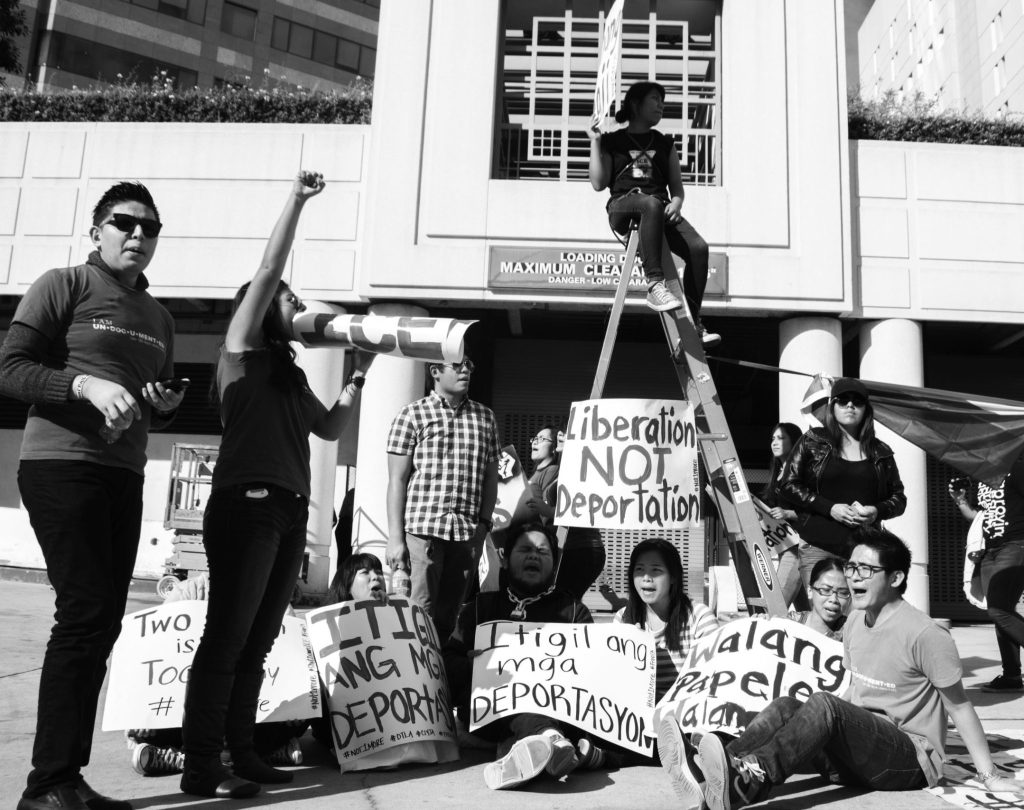Nail Files California: A Study of Nail Salon Workers and Their Industry
By: James Huỳnh, Preeti Sharma, Saba Waheed, Lisa Fu, Lucero Herrera, Mary Nguyen, Catherine Porter
California plays a crucial role in the national nail salon sector due to its labor force, the market, and its history of organizing and advocacy. The state is home to the largest number of licensed manicurists and the largest number of nail salons in the country. Transformed primarily by Vietnamese refugee women, the California nail salon industry has been a dynamic and growing one, marked by new technologies, changing trends and designs, and affordability. At the same time, the nail salon has secured its position as a place of social significance, one that customers rely on for services as much as they do for care and intimate, social connection.
Despite the relevance of the nail salon for self-care and pampering, most nail salon workers are undervalued and still face a myriad of labor issues. In addition to health and safety concerns—mostly related to the exposure to chemicals in cosmetics products linked to health issues including reproductive harm, respiratory issues, and cancer—the predominantly Vietnamese refugee women workforce experiences ongoing wage and hour labor violations, including below minimum wages and misclassification of employment status. There is insufficient enforcement by state agencies as well as insufficient language and culturally appropriate education on labor laws for workers and owners.
Nail Files California: A Study of Nail Salon Workers and Their Industry profiles the industry and its workforce to identify the gaps in research as well as the policy needs of the sector to better address its inequities and challenges, with a focus on (1) workers and owners across the state; (2) wages, pay structure, pricing, and consumption; (3) needs of the workforce; and (4) opportunities to strengthen the workforce.
Among other findings, the report notes:
- The statewide nail salon sector is growing, and the workforce is primarily Asian, immigrant, and refugee women. The number of nail salons in California continued to increase during the past decade; almost half of California nail salon workers are in Southern California. Most nail salons can be classified as “microbusinesses.” Nail salons and other personal care services industries have the largest Asian American and Pacific Islander (AAPI) workforce in the state, with nail salon workers more likely to be middle-aged.
- The workforce is still recovering from COVID-19. Annual payroll dropped during the pandemic, as nail salons faced extended periods of shutdowns during 2020-21. Owners and workers reported a sharp decline in customer flow, and many workers have had a hard time finding full-time jobs.
- Nail salon workers are misclassified and earn low-wages. The vast majority (80%) of nail salon workers are considered low-wage workers. Nail salon workers reported a low hourly median wage of $10.94, which is less than the $13.00 minimum wage for businesses with 25 employees or fewer for the same year. Nail salon workers are full time, and most work year round. Almost a third of the workforce were classified as self-employed rather than as employees who work for wages (i.e., receiving a W-2). Nail salon workers require further food and housing security and health support. Consumers are willing to pay more for better nail salon worker labor conditions.
- Labor education and workforce training can increase nail salon worker capacity. Nail salon positions did not require a college degree or English fluency. Additionally, job training occurred through formal and informal sites.
Authors recommend:
- Providing educational opportunities for workers and employers about their labor rights and responsibilities with culturally and linguistically appropriate materials, such as language and culturally accessible virtual training and mailings for all manicurists and salons licensed by the California Board of Barbering and Cosmetology (BBC). Additionally, develop government-community partnerships that would conduct joint enforcement efforts alongside workers’ rights organizations to support nail salon workers’ participation in training programs.
- Improving language, cultural, and technological accessibility of information for workers and owners on labor laws with state labor agencies. For instance, developing a translated webpage specific to the nail salon worker and owner community with up-to-date information included on agency websites and other materials.
- Creating multi-stakeholder partnerships that establish comprehensive education, outreach, and incentive programs to assist owners in continuing or transitioning to labor law compliance. These partnerships should include information on business practices that support sustainability, how to address good pay, scheduling, and benefits, and advancement opportunities for workers.
- Through a collaborative partnership with community-based organizations (CBOs) and nail salon owners and workers, developing a campaign to educate nail salon consumers on why it is important to pay a fair price for nail services.
Related Reports
- Nailing New Labor Models: Exploring Sectoral Boards and High Road Training Partnerships in the Nail Salon Sector
- Reopening During COVID-19: The Experience of Nail Salon Workers and Owners in California
- Nail Files: A Study of Nail Salon Workers and Industry in the United States
- A Survey of Nail Salon Workers and Owners in California During COVID-19

